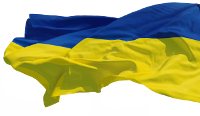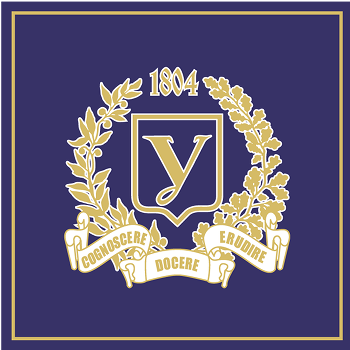ecological network
- 2011-1-2-:15
Starting Positions Of Conceptual Bases Development Of Ecological Network Creation Of Kharkov Area
In-process the components of existent ecological network are analyzed in detail, the state of biological and landscape variety of the Kharkov area is appraised. The degree of influence of anthropogenic factors is certain on the structural elements of ecological network. Basic directions optimization of measures are outlined on creation and perfection of ecological network of area.
- 2020-33
The Recovery Territories of the Ecological Network in Zhmerinsky District of Vinnytsia Region
Purpose. To identify the peculiarities of the recovery territories of the ecological network of Zhmerinsky district of Vinnytsia region.
Methods: field, cartographic system analysis.
Results. The total area of the recovery territories of the ecological network of Zhmerinsky district is 5449,61 hectares, that is 4.8 % of the area of the district. They include Dubovska, Zorincivska, Lisogirkivska, Petranivska, Sloboda-Mezhirivska, Karmalyukovska, Vasilivkivska, Pultivcivska, Lyudavska, Demidivska, Potokivska, Rizhavska, Zhmerinska, Petrivkivska, Kichmanska, Yaroshenkivska, Tarasivkivska, Travnevska, Noskivecka, Luka-Movchanska, Murashkivska, Chapayivska, Oleksandrivska territories. They cover channel, floodplain, slope and watershed types of landscape terrains. Balka tracts on the slopes of river valleys with forest and meadow vegetation are dominant. It was revealed that the main anthropogenic factors of nature degradation of the recovery territories are cattle grazing, haymaking, gathering of mushrooms, berries, flowers, illegal felling of trees, pollution by household waste, discharge of household sewage into rivers and streams. The main environmental measures should be the cessation of erosion processes, restoration of diversity and protection of flora and fauna, elimination of natural landfills of household waste.
Conclusion. 23 recovery territories are identified in the structure of the ecological network of Zhmerinsky district of Vinnytsia region. To compensate for the small number of biocenters in the future, most recovery territories have been allocated in the north-western, southern and south-eastern parts of the district. Their characteristic features are analized and renaturalization measures are proposed. Due to these measures it will be possible to restore degraded areas of nature, increase the number and the area of key, connecting and buffer areas. As a result, the state of the environment, living conditions of flora, fauna and vital activities of the population will improve.
- 2018-1-2-:29
The Recovery Territories of the Рaradynamyc Anthropogenic Landscape System of the Ecological Network of Murovanokurylovetsky District of Vinnytsia Region
Purpose. To identify the peculiarities of the recovery territories of the paradynamyc anthropogenic land-scape system (PDALS) of the ecological network of Murovanokurylovetsky district of Vinnytsia region. Meth-ods: field, theoretical generalization, analytical and cartographic analysis, logic, finding of empirical relation-ships, cartographic. Results. It was discovered that the areas of relative-natural landscapes occupy only a few percent of the area of Murovanokurylovetsky district of Vinnytsia region. Therefore, under such conditions, it was offered to form an ecological network as a paradynamyc anthropogenic landscape system. This allows to include valuable territories of different levels of anthropogenization in the ecological network.
In the article, the ecological network is considered as a holistic paradynamyc anthropogenic landscape sys-tem of key, connecting and buffer territories, zones of potential renaturalization, eco-technical junctions and interactive elements. They are related to each other by the common genesis, simultaneity or sequence of origin and development, dynamic connections.
The important structural elements of the paradynamyc anthropogenic landscape system of ecological net-works are recovery territories (zones of potential renaturalization). Publications devoted to their description are currently single. Nevertheless, measures of renaturalization within the recovery territories allow to restore and introduce valuable nature sites into the structure of environmental protection systems. Therefore, the study of recovery territories is very relevant.
The structure of the nature-protective paradynamyc anthropogenic landscape system of the ecological network of Murovanokurylovetsky district of Vinnytsia region identified the following recovery territories: Konyschivska, Zhytnykivska, Verbovetska, Vynohradnivska, Naddnistrianska, Zhvanska, Halaykivetska, Volodymyrivska, Murovanokurylovetska, Posuhivska, Dereshovska, Myhaylivetska, Yaltushkivska, Bilyanska, Karayetska, Nyshivetska, Kotyuzhanska, Blakitnivs'ka, Gorayska and Glibokodolinska.
The characteristic features of the recovery territories of the nature-protective paradynamyc anthropogenic landscape system of the ecological network of Murovanokurylovetsky district of Vinnytsia region are analyzed in the article. It was discovered that natural components and landscape complexes within the zones of potential renaturalization have undergone a significant transformation under the influence of human anthropogenic activity. They are often polluted and devoid of original state. However, areas with remnants of landscape complexes that are close to natural ones are preserved in these territories. Under the conditions of total
________________________
© Яцентюк Ю. В., 2018
anthropogenic transformation of nature, recovery territories are one of the few centers of the existence of valua-ble species of vegetation and wildlife. The species of plants and animals of the Red Books of Vinnytsia region and Ukraine are found here.
The article suggests renaturalization measures for each recovery territory of the nature-protective parady-namyc anthropogenic landscape system of the ecological network of Murovanokurylovetsky district of Vinnytsia region. The main environmental measures within the zones of potential renaturalization are overcoming erosion processes, restoration, care and protection of forest, meadow, steppe, wetland and meadow-steppe vegetation.
The paradynamyc connections between zones of potential renaturalization and surrounding anthropogenic landscapes, local biocentres, regional and local ecocorridors, and other recovery territories are considered in detail.
Conclusion. Consequently, 20 recovery territories are identified within the paradynamyc anthropogenic landscape system of the ecological network of Murovanokurylovetsky district of Vinnytsia region. Their total area is 6222.16 hectares, which is 7.02 % of the area of the district. They cover the sources of the tributaries of the main rivers in the area, the steep slopes of the river valleys with erosion forms of relief, forest, meadow, meadow-steppe and wetland landscape complexes. Nature-protective measures within them will allow the de-graded areas of nature to be restored. By intermediation of paradynamyc connections, they will improve the state of the environment. Under the conditions of renaturalization on the basis of the recovery territories, it will be possible to form new and expand existing biocentres, buffer zones, create interactive elements, and optimize local ecological corridors. This will improve the habitat of living organisms and ensure their recovery and conservation.
- 2017-1-2-:27
Nature-reserve fund Kiverzivsky district of Volyn region
One of the strategic tasks of the state environmental policy of Ukraine for the period up to 2020 is to increase the area of the national econet, which should take place by expanding existing and creating new objects of the nature reserve fund, which is legally approved by laws and national programs in the field of development of the ecological network And a reserved case. Purpose. The study of the structure and spatial distribution of protected areas and objects Кiverzivsky district of Volyn region, determining quality of nature reserve network. Methods. Comparative geography, mathematics, graphing, statistical, analytical. Results. The structure and spatial distribution of protected areas and sites of the area. The quality of the protected areas and territories assessed for coefficient of nature protection and insularization, an indicator of density, uniformity of distribution. Established landscape and geographical representation network of protected areas. The structure of reserved area is characterized by uneven distribution. Dominated facilities of less than 50 hectares, their portion of the total number is 70,59%. High іnsularization (0,36) points to significant fragmentation of protected areas and their area of environmental instability. Directions improving territorial structure protected area network. Conclusions. For the further successful development of the conservation area on the territory, the next step should be the completion of the development of schemes for the formation of the ecological network of natural nuclei and ecocorridors of national importance in order to ensure the possibility of natural migration and distribution of plant and animal species, preservation of valuable natural elements of the environment. Important role in ensuring reliable migratory biotic connections is given to the NPC "Tsumanska Pushcha".
- 2012-1-2-:17
Landscape-Ecological Planning as the Terms of the Kharkov Area Territory Ecological Framework Forming
There are the conditions of formation of ecological frame of the Kharkiv region, taking into account trends in landscape and environmental planning. Determined capabilities, giving the landscape approach and ways to optimize the ecological network area based on the concept of landscape and environmental planning Kharkiv region.
- 2012-3-4-:18
Principles Of Landscape – Ecological Planning In The Organisation Of Ecological Network Of Kharkiv Region
The mechanism of landscape ecological planning in the organization of ecological network of Kharkiv region has been revealed. The structure of the landscape and environmental planning process of protected areas which consists of three major steps: landscape analysis, landscape diagnosis and prognosis and activities planning, has been determined. The components of each phase have been described in detail. Spatial comparison of the ecological network structure concerning Kharkiv region’s districts has been made. The perspectives of the territory organization to be attributed to ecological system have been substantiated.
- 2013-1-2-:19
The structure of district schemes of the ecological network schemes north of Donetsk region
The comparative characteristics of the area of the ecological network schemes north of Donetsk region. Emphasizes the principles of non-conformity of the environmental network of national and regional and local levels, based on the natural division of the territory – the national level, and administrative – regional and local levels. Obtained ballroom assess the diversity of ecological network at the district level, which allows us to compare the structural components of regional ecological networks and environmental networks themselves in terms of priority of their introduction into the general scheme of the ecological network of the country.
- 2015-1-2-:23
Ways of optimization of territorial NNP «Slobozhanskiy» on the landscape basis
Approved methods of mathematical study of expanding the territory NNP «Slobozhansky» based on the calculation complexity, entropy and homogeneity of its landscape structure. For ecologically sound expansion of the park proposed to include in its composition floodplain area, by removing part of the economic use of the land of village councils and limitations of human activities on them.

